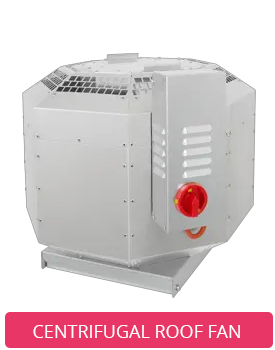Blog
Download our brochure

Stay informed
Industrial kitchens are intense environments. High heat, moisture, and airborne grease from cooking equipment can create safety hazards and make working conditions unpleasant. An industrial kitchen HVAC system tackles these challenges by managing temperature, ventilation, and air quality.
Exhaust fans: Removing high temperature air
Unlike a typical home system, industrial kitchen HVAC focuses heavily on ventilation. Powerful exhaust fans remove hot, greasy air from cooking surfaces and expel it outside. This keeps the kitchen cooler and prevents heat and grease buildup that could lead to fires or respiratory problems.
The size and type of exhaust fan depend on the size and layout of the kitchen, along with the cooking methods used.
Filters: Capturing Grease and Contaminants
Exhaust fans alone wouldn't be enough. Imagine the amount of grease, smoke, and odors generated during peak hours. This is where filters come in. Installed within the exhaust hood, filters trap grease particles, smoke, and other airborne contaminants before they enter the ventilation system or the building itself.
Several filter types are used in industrial kitchens, each with its strengths. Mesh filters catch large grease particles, while baffle filters are better for smaller ones. High-performance options like electrostatic precipitators can even remove smoke and odors. Regular cleaning and replacement of filters are essential for optimal performance and fire safety.
Exhaust Hoods: Capturing Heat at the Source
Exhaust hoods are positioned directly above cooking equipment. They act like giant funnels, capturing heat, smoke, and grease before they rise and spread throughout the kitchen. The design is crucial – large enough to capture contaminants effectively, yet positioned high enough not to obstruct cooking operations.
There are various hood types, from simple wall-mounted units to complex island hoods hanging from the ceiling. The right hood depends on the type and layout of the equipment beneath it.
Additional Considerations for Optimal Performance
An industrial kitchen HVAC system is more than just these three core components. Here are some additional factors:
- Makeup Air: Removing large volumes of hot air can create negative pressure in the kitchen. Makeup air units supply fresh, conditioned air to compensate, ensuring proper ventilation and preventing infiltration of outside contaminants.
- Zoning: Large kitchens may benefit from zoned temperature control. This allows for different areas, like the baking section and the prep area, to be maintained at specific temperatures for optimal working conditions.
- Energy Efficiency: Industrial kitchen HVAC systems can consume a lot of energy. Choosing energy-efficient equipment, utilizing variable speed drives on exhaust fans, and implementing heat recovery systems can significantly reduce energy consumption.
By working together, exhaust fans, filters, and hoods, along with these additional considerations, form the backbone of an industrial kitchen HVAC system. This system ensures a safe, comfortable, and well-ventilated environment for everyone working or dining in the kitchen.






